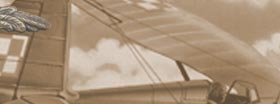Polish Women at War
Pomocnicza Lotnicza Służba Kobiet (PLSK)
Pomocniczna Wojskowa Służba Kobiet (PWSK)
Pomocnicza Morska Służba Kobiet (PMSK)
Pomocniczna Wojskowa Służba Kobiet (PWSK)
Women’s Auxiliary Army Service (Polish ATS)
Once the Soviets started to empty out the Gulags General Anders found that in August 1941 he had thousands of women willing to join the fledgling Women’s Auxiliary Service (Anders, 1949). During the first evacuation 33,069 soldiers (forming the 8th, 9th and 10th Infantry Divisions) and 10,789 civilians crossed the Caspian Sea for Iran and the Iraq. Polish women in the East numbered 1,500 and were trained initially as nurses, guard duties and drivers, however as man-power shortages arose clerical and administrative duties were added including intelligence. The first commander was Zofia Lesnioska, the daughter of General Sikorski who perished with him in the air-crash off Gibraltar who was replaced by Maria C. Lesniowska until the end of the war.
The second wave of deportees came out in August 1942 that included 26,094 civilians with a further 2,694 who took an overland route from Ashkhabad to Meshed in Iran (Kochanski, 2012). Of the 40,000 civilians who arrived in Iran, 6,123 joined the Polish Women’s Auxiliary Service with children (females in Ochotnniczki and males in Junaks) entering a schooling system, which would act as a feeder system into cadet-schools. The number of civilian volunteers prompted General Ujejski to request 1,500 women to be assigned to the PAF and on 14th December 1942 General Marian Kukiel (Polish Minister of National Defence) passed a decree.
Polish recruits came from all over the countries of the displaced Poles. In October 1943 1,000 women were awaiting recruitment in transit camps in Africa and Palestine awaiting embarkation on troop ships. After the invasion of Europe further recruitment took place from French émigrés and former fighters of the AK imprisoned after the Warsaw Rising in Germany and Holland.
Approximately 4,700 women served in Pestki most of whom served in the Middle East with Anders.
Pomocnicza Lotnicza Służba Kobiet (PLSK)
The Polish Women’s Auxiliary Air Force (WAAF)
By 1943 the impact of casualties in both the fighter and bomber squadrons left shortages of skilled operational personnel. Nick-named the ‘WAAFKI’ after the British equivalent service, the Polish women played an important role within the PAF. Initially formed in 1939 Polish women were assigned to the WAAF after the British Defence Regulation of April 1941 allowed them to enter service. The first recruit was Helena Paszkiewicz who completed her training by October 1941.
Basic training or recruitment courses took place in Falkirk (Bantaskin House), Scotland and on completion were sent to the depot at Wilmslow, Cheshire to complete training with the WAAF . Those selected for officer training were sent to Windermere in Cumbria. The Technical College at Halton provided catering courses while at Locking the more technical courses in aircraft and engine mechanics, instruments and electricians took place. Blackpool provided driving and wireless operators courses.
Although never fully integrated into the PAF as an autonomous unit, the women were allowed to wear PAF cap-badges and insignia (Cynk, 1998) to distinguish them from their British counter-parts.
The recruitment and completion of courses saw the women volunteers reaching PAF units in early 1944 and by the end of 1944 had replaced all female posts at the PAF stations. At Faldingworth, Lincolnshire Polish WAAF’s worked alongside mechanics and armourers too and was unique in having the only female intelligence officer Alicja Kaliniecka based on the station. In all some 45 trades including domestic, clerical, medical and technical were covered by the trained Polish personnel who were commended for their performance with tributes being made from PAF and RAF commands.
Approximately 1,426 women served in the Waafki (Cynk, 1998).
Pomocnicza Morska Służba Kobiet (PMSK)
Women’s Maritime Auxiliary Service
This unit was the equivalent of the British WRENS and was nicknamed Mewki. They provided essential shore based support for the Polish Navy in administrative, technical and some mechanical support. First commanded by Eve Miszewska approximately 112 women enlisted after successfully passing out from the training camp based in Mill Hill, London.
Air Transport Auxiliary (ATA)
Formed in August 1939, the need to move aircraft into different ‘theatres of war’ by air rather than crated in ships grew under duress of replacing planes and equipment. The Atlantic Ferry Transport Organization was based in Montreal as a result of the lend-lease arrangements with the USA. Polish pilots started to ferry aircraft from October 1940 with No.271 Squadron using Harrows and Bombays on the highly dangerous trans-African route. The network was split geographically into 4 regions of operations:
- The British Isles Area (ATA and No.44 Transport Group)
- Trans-African and Middle East Routs (Takoradi Detachment and No.216 Transport Group
- The Atlantic Bridge and No.45 Transport Group
- Operations in India and No.229 Transport Group





